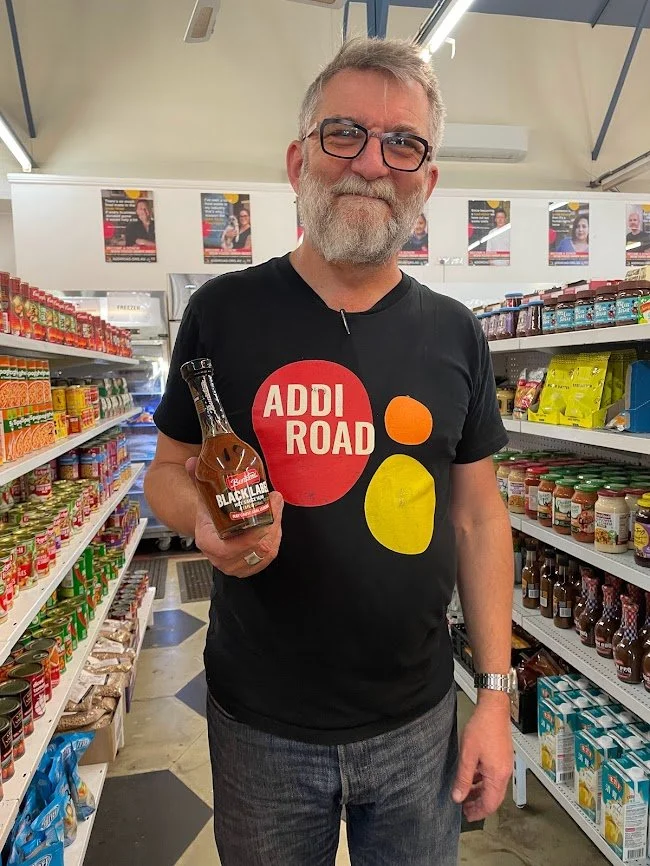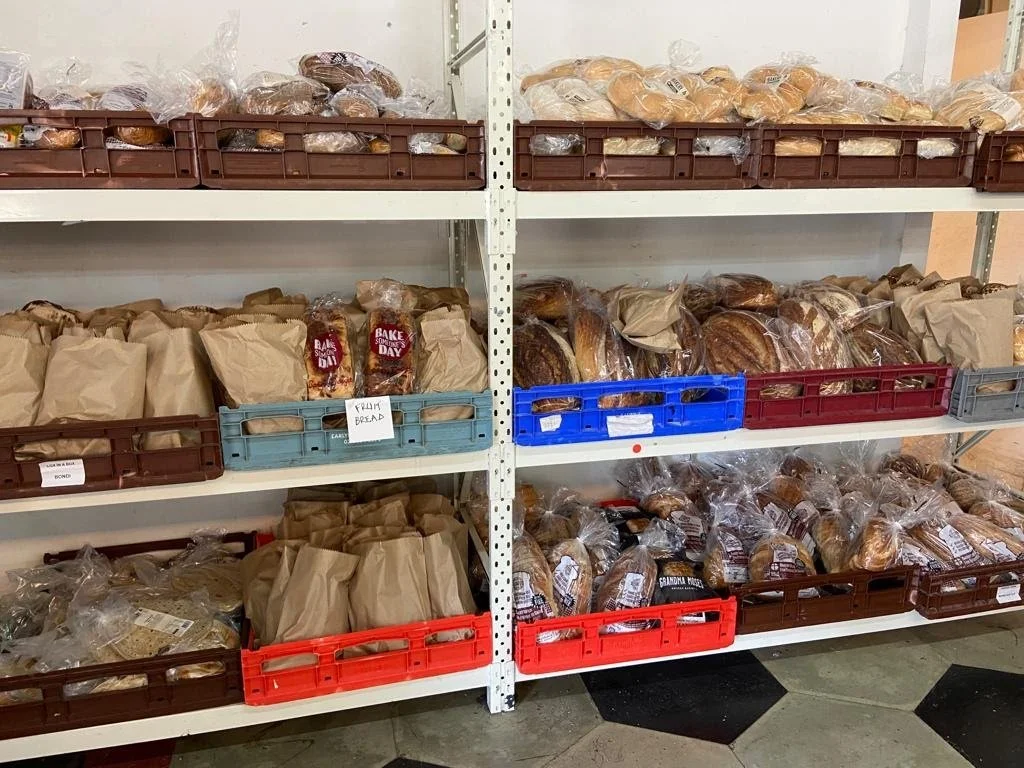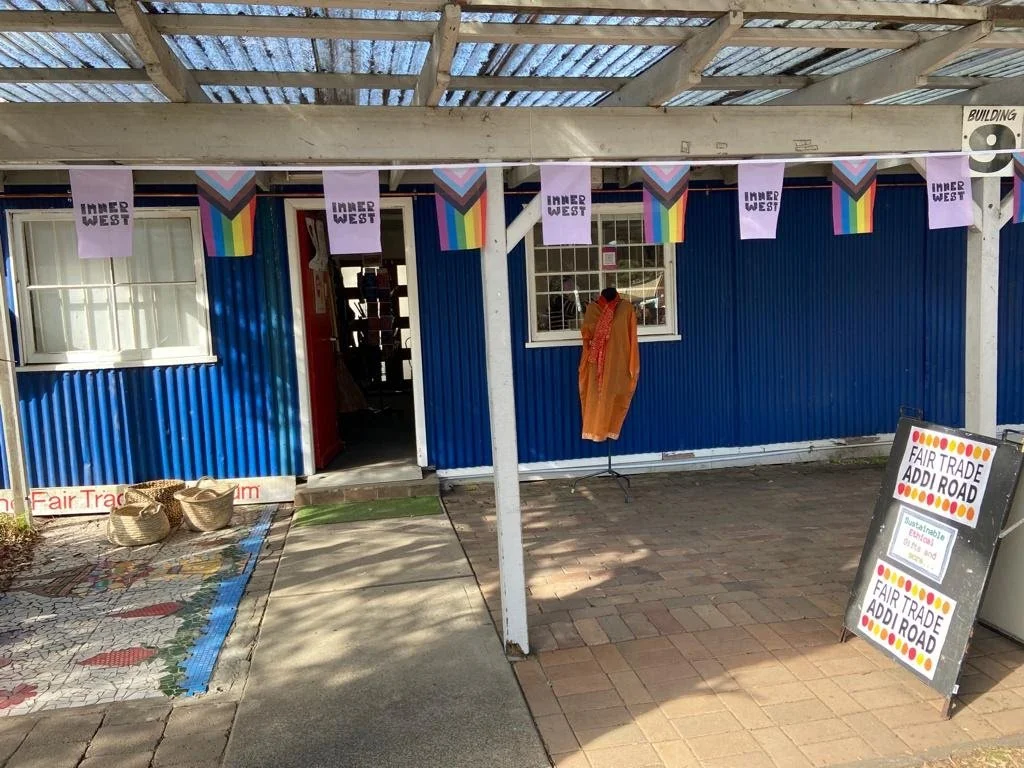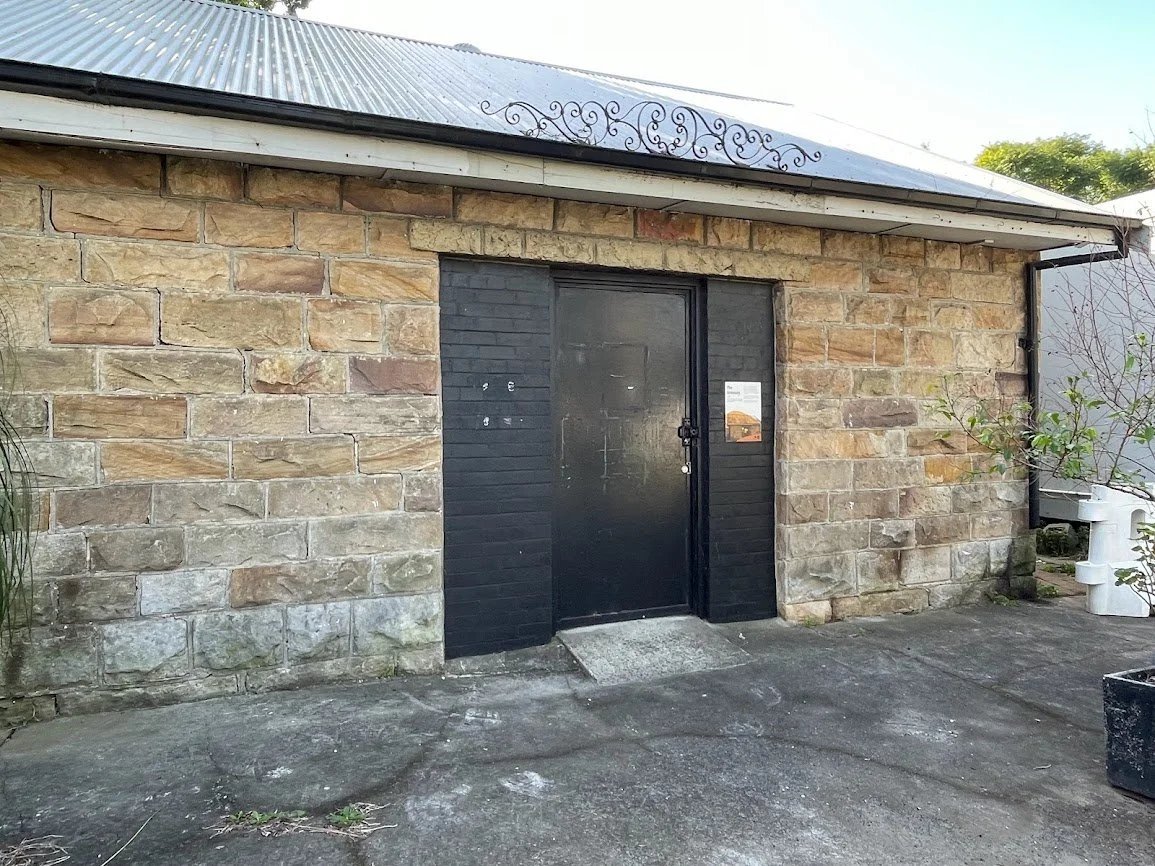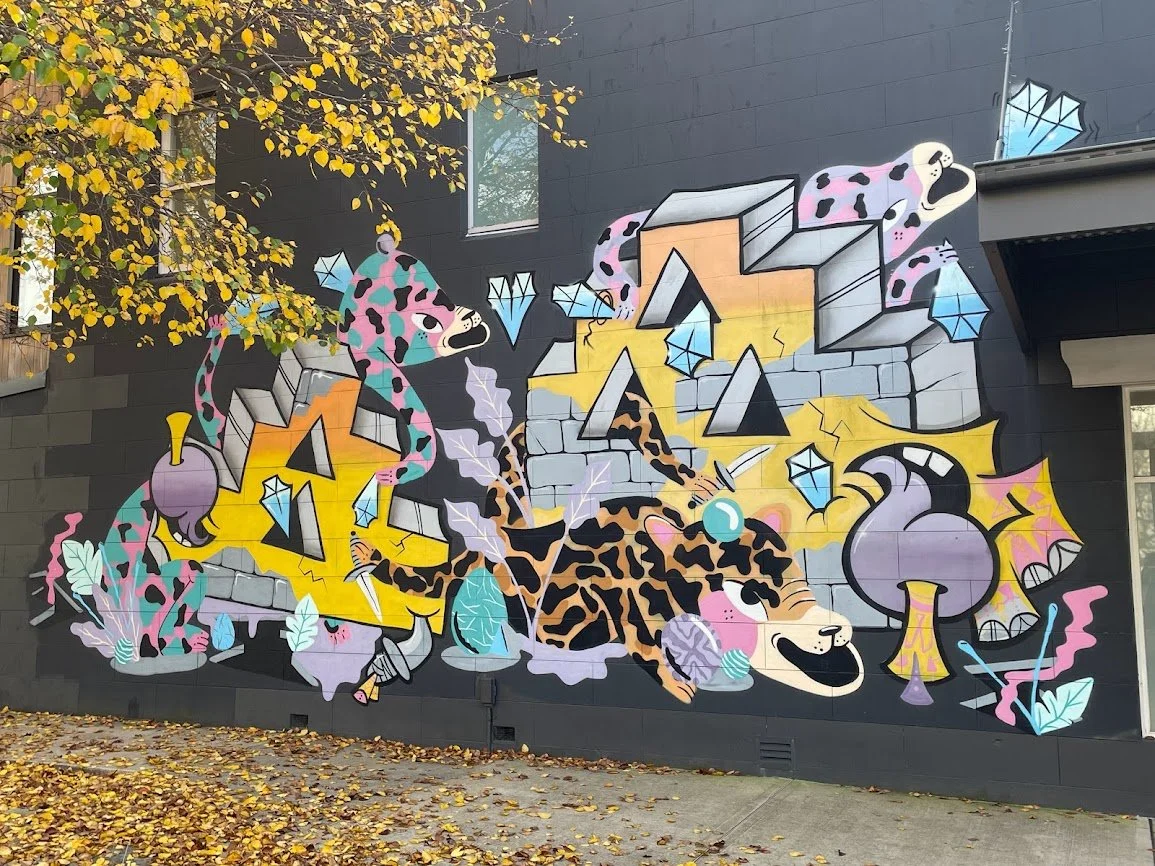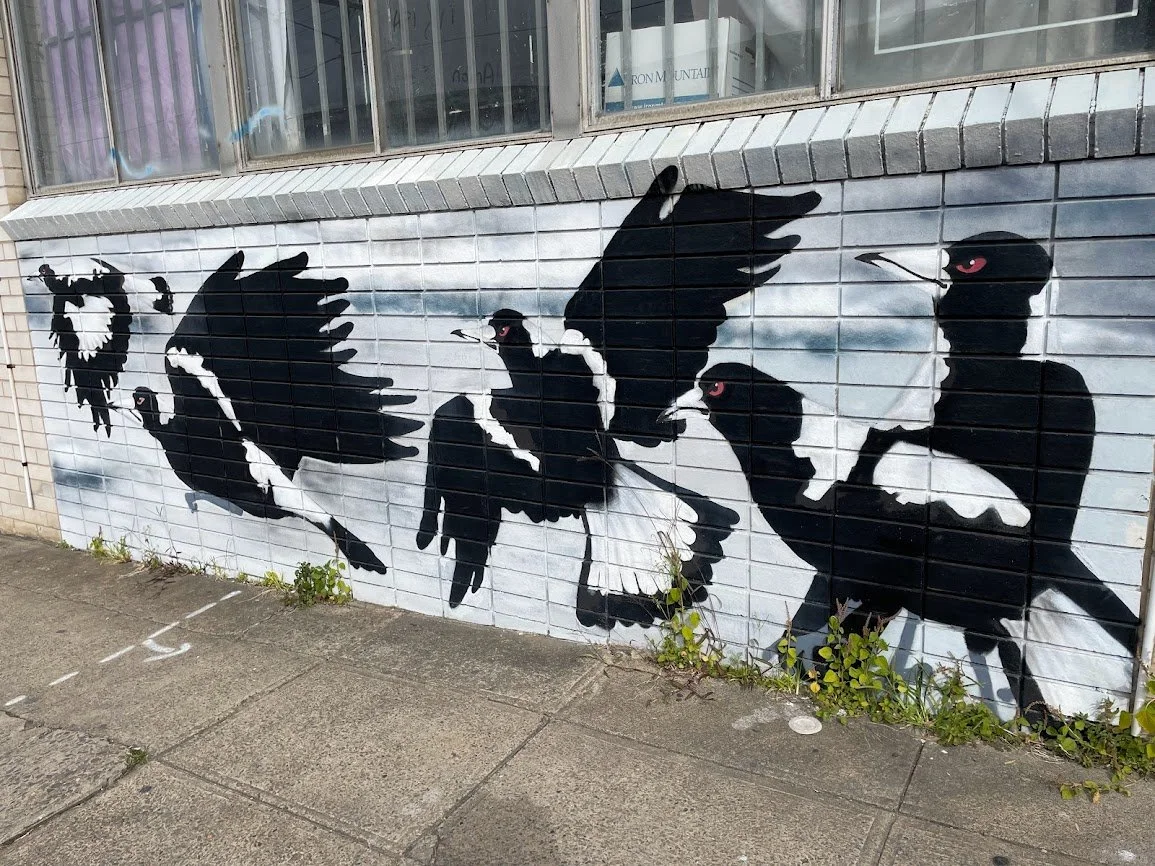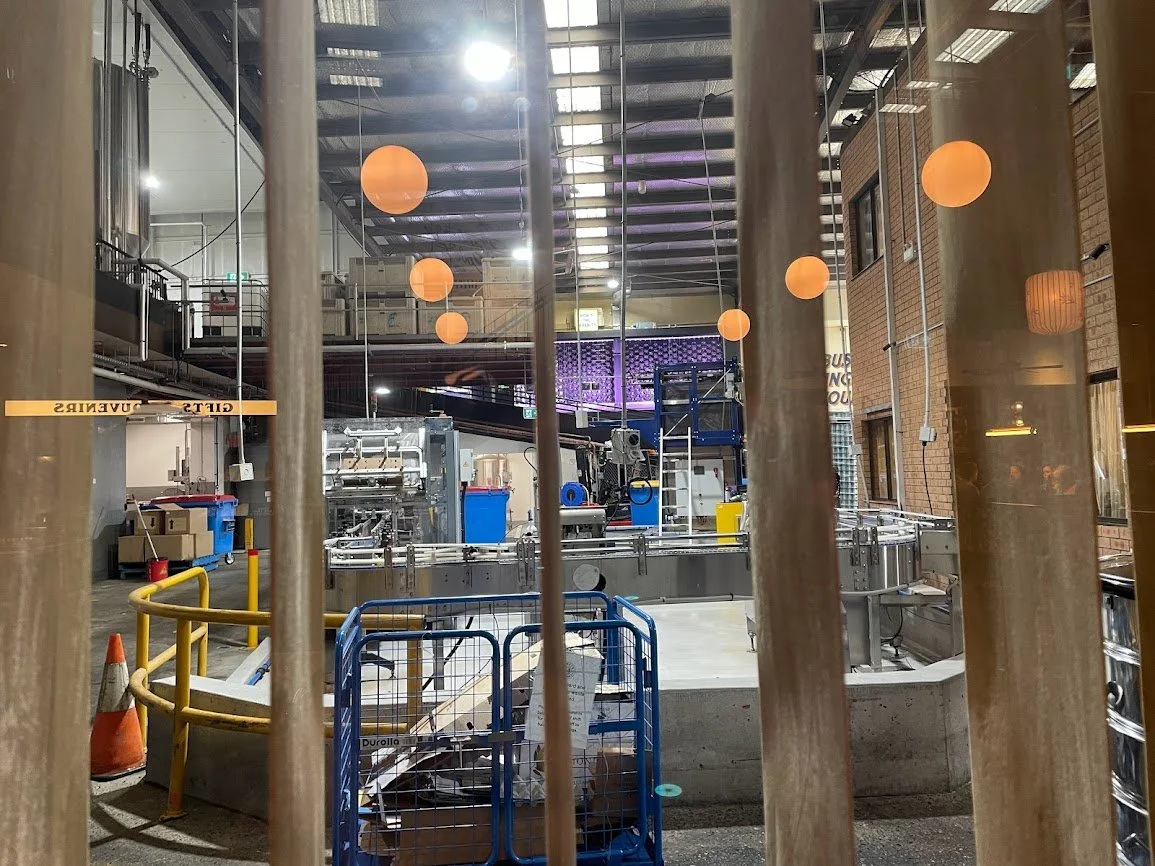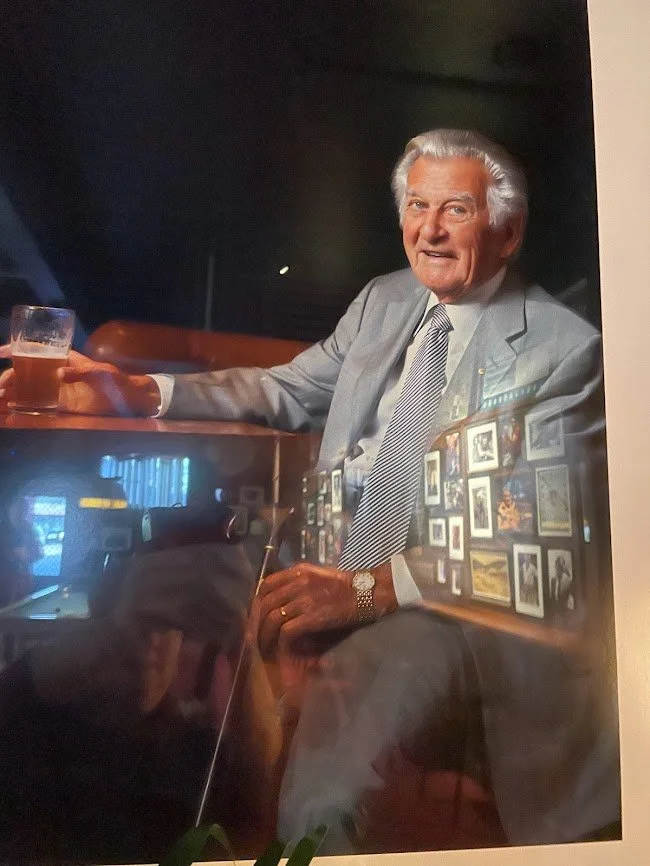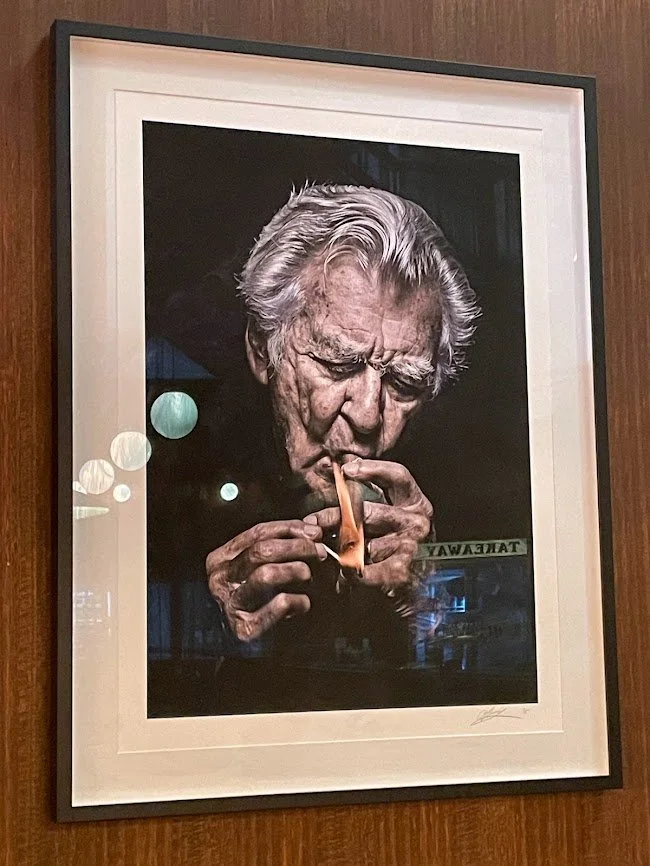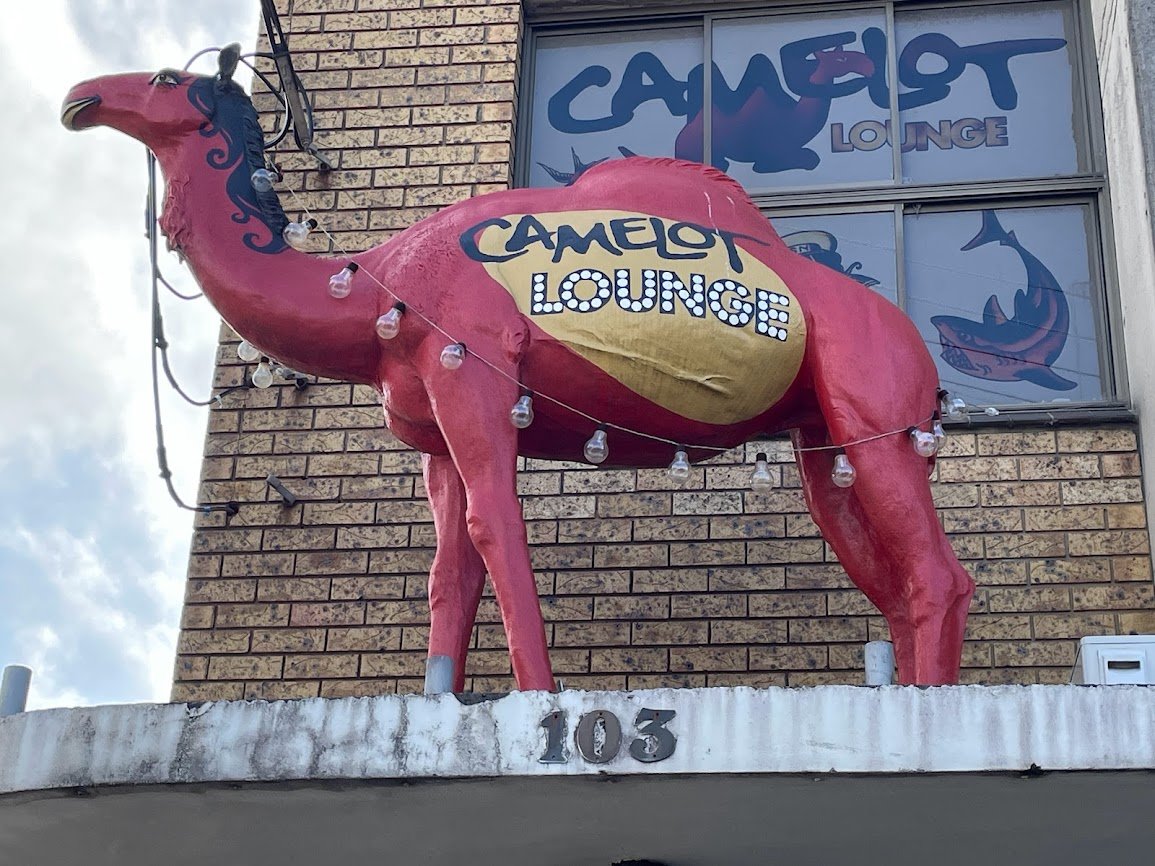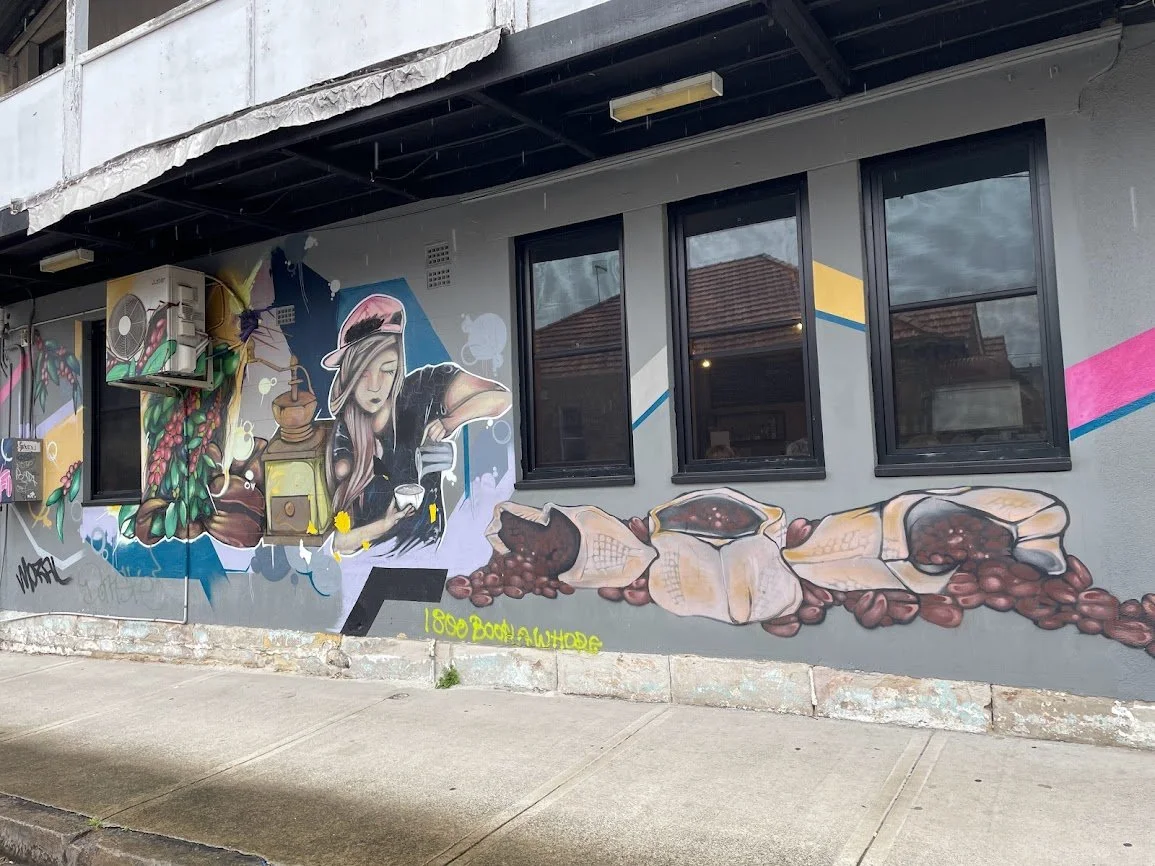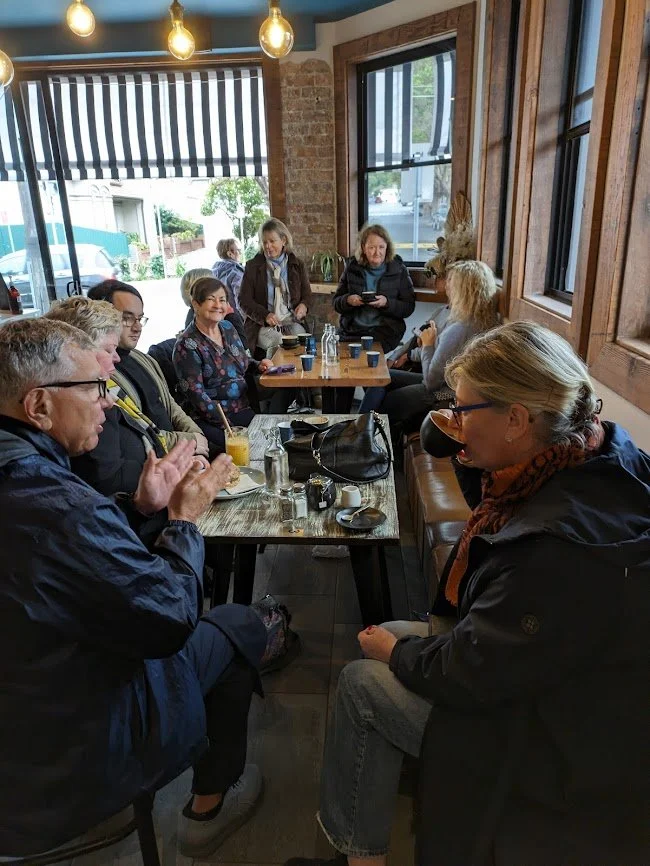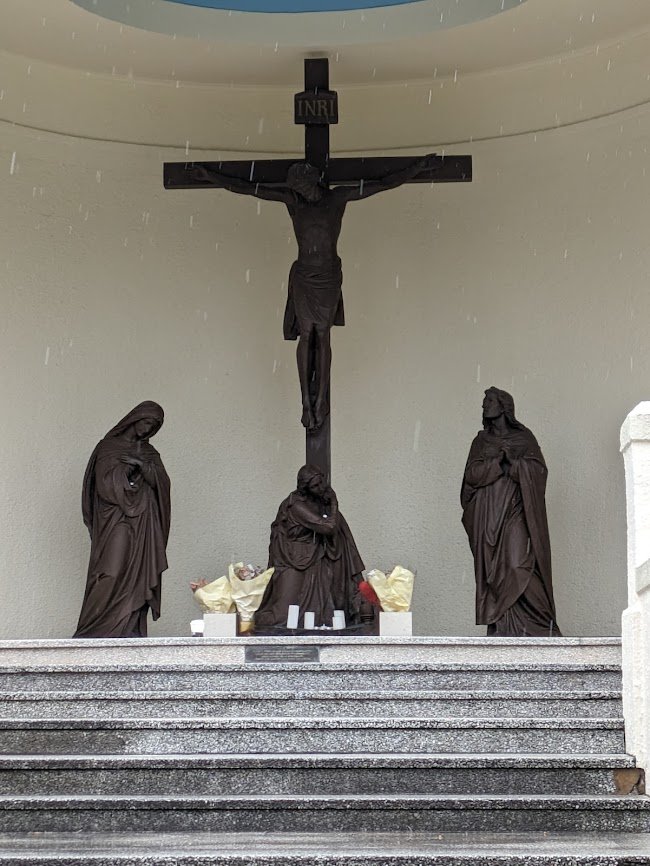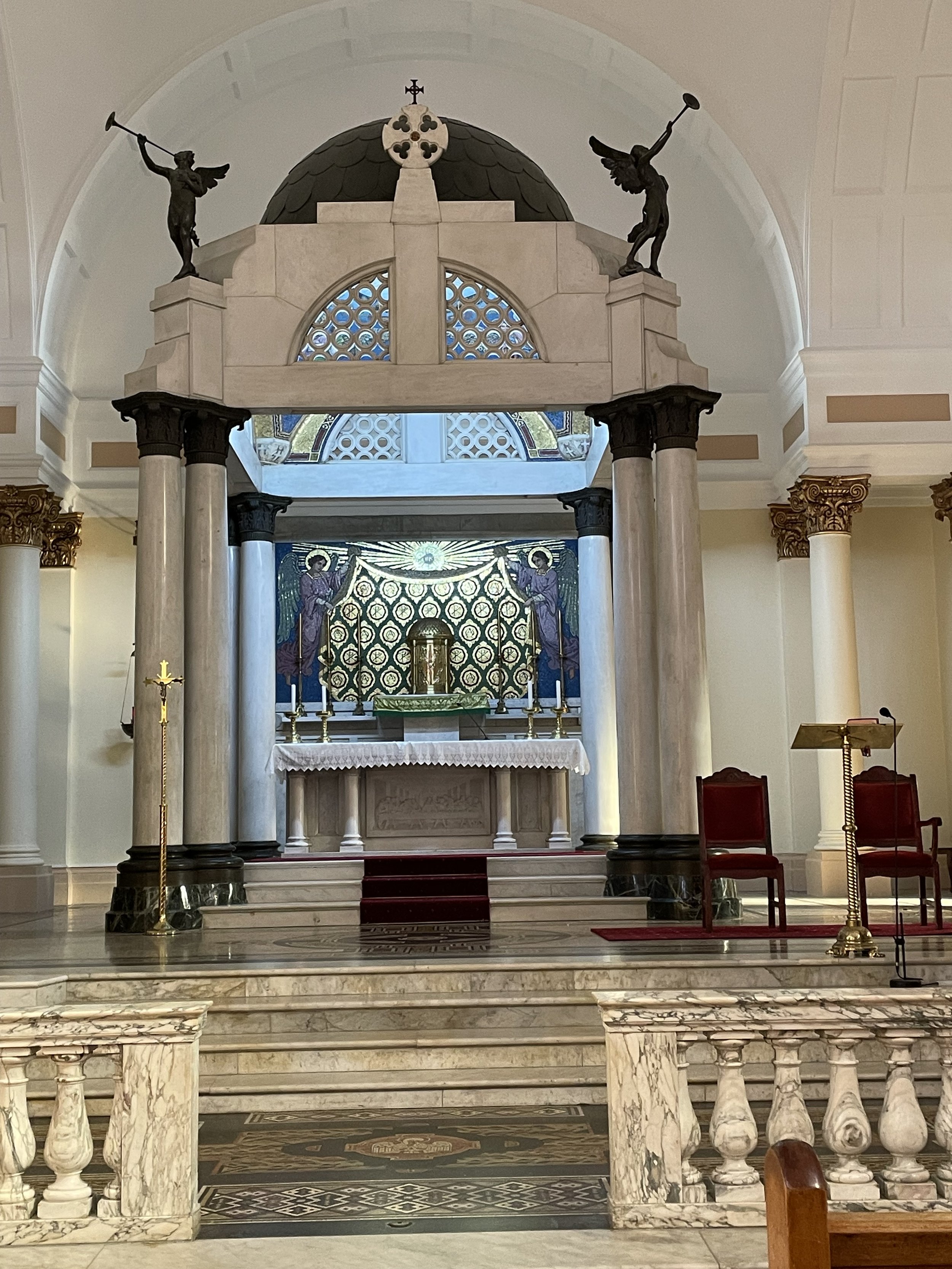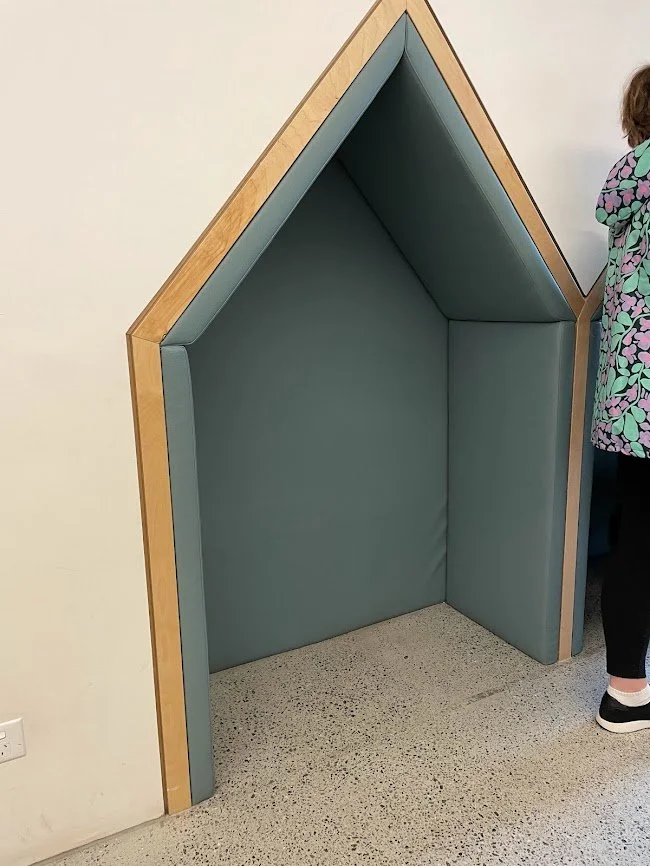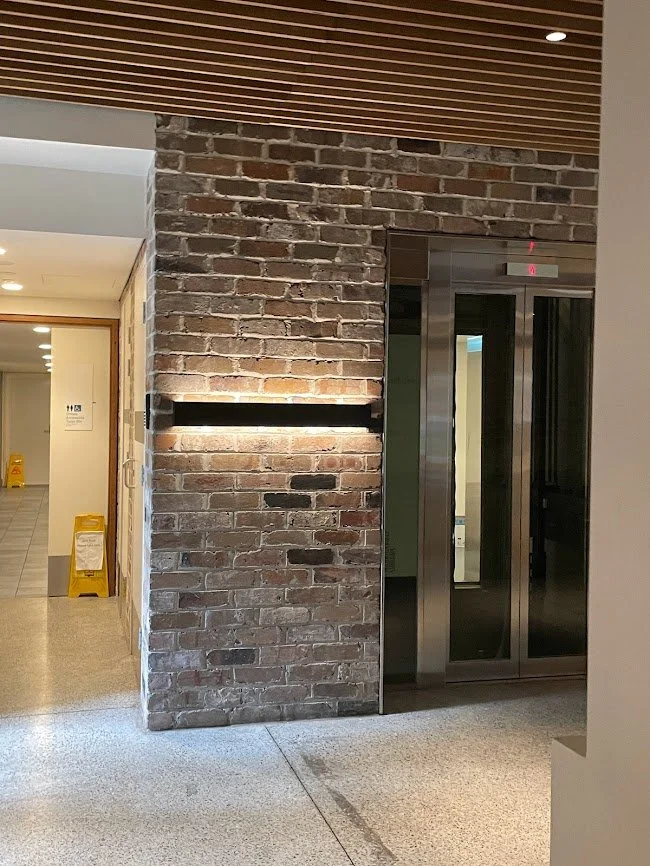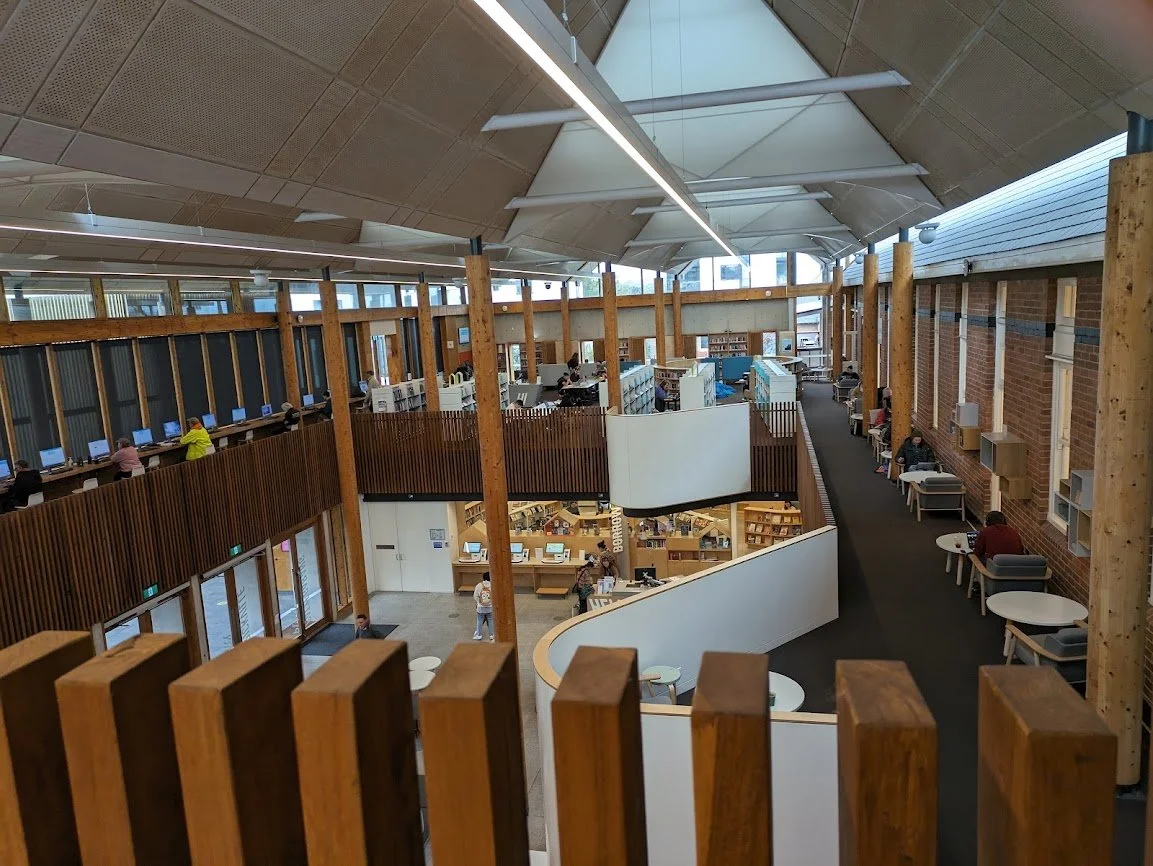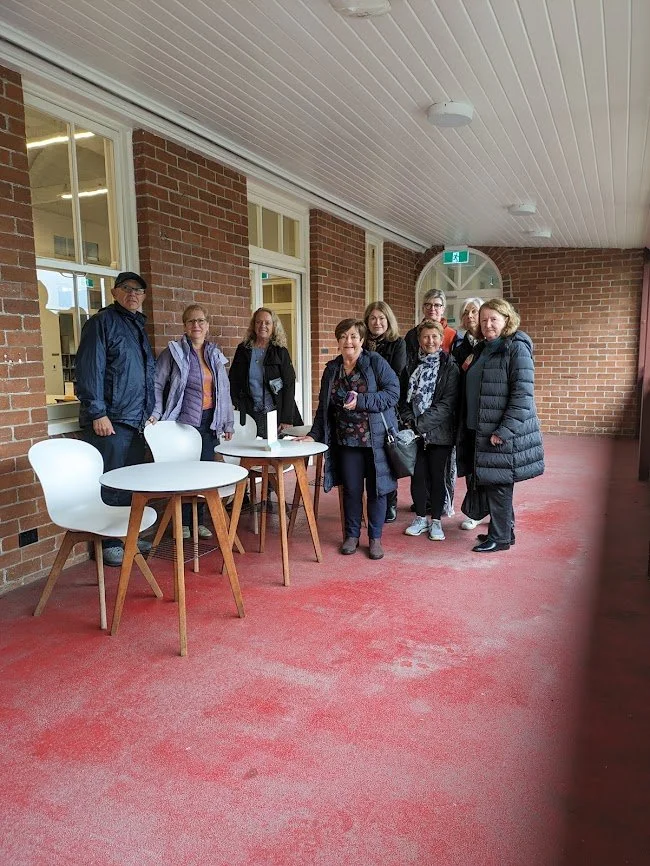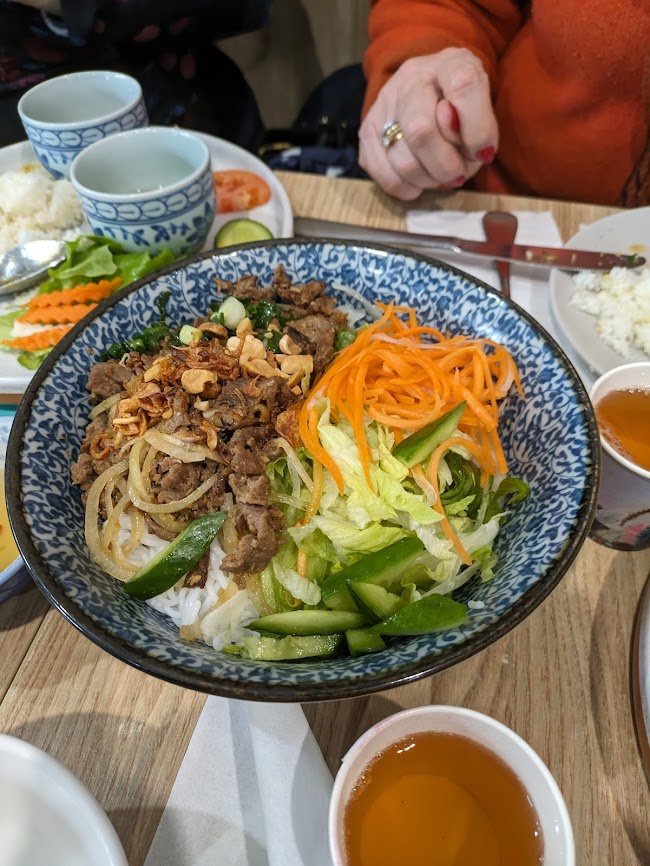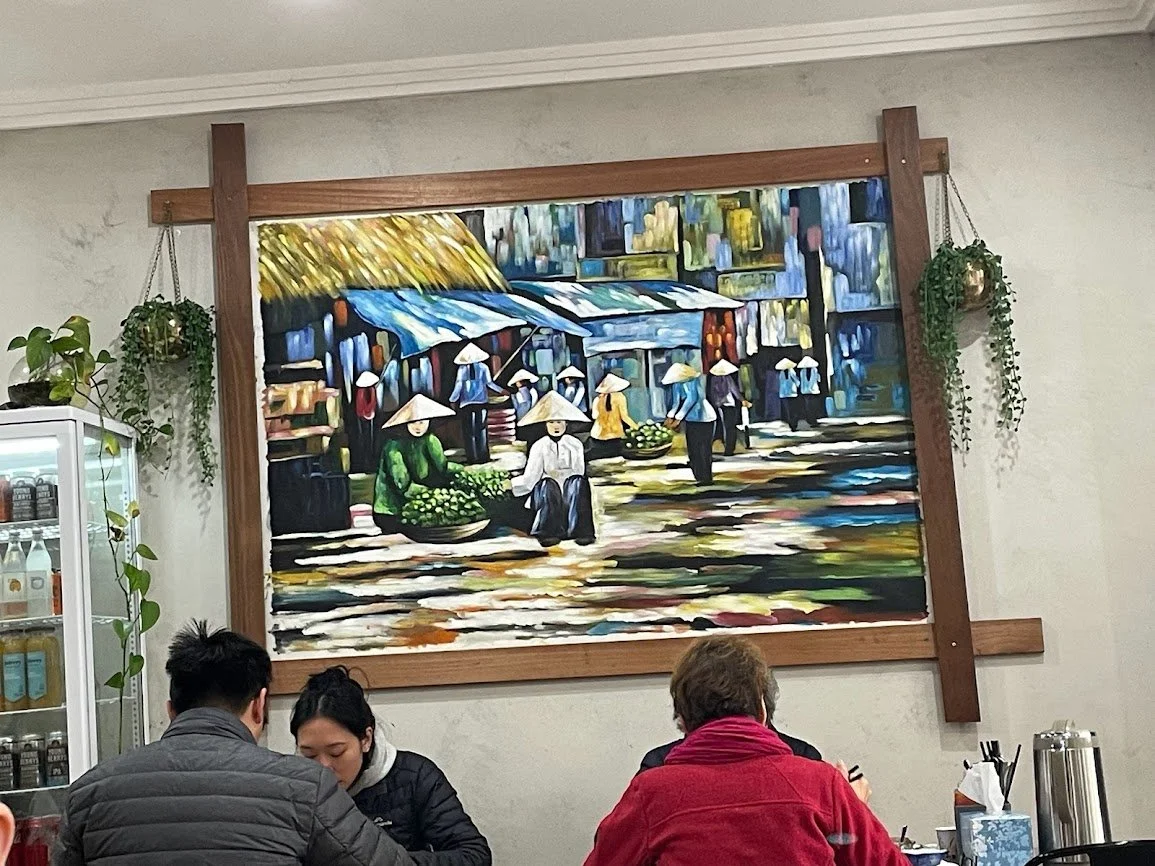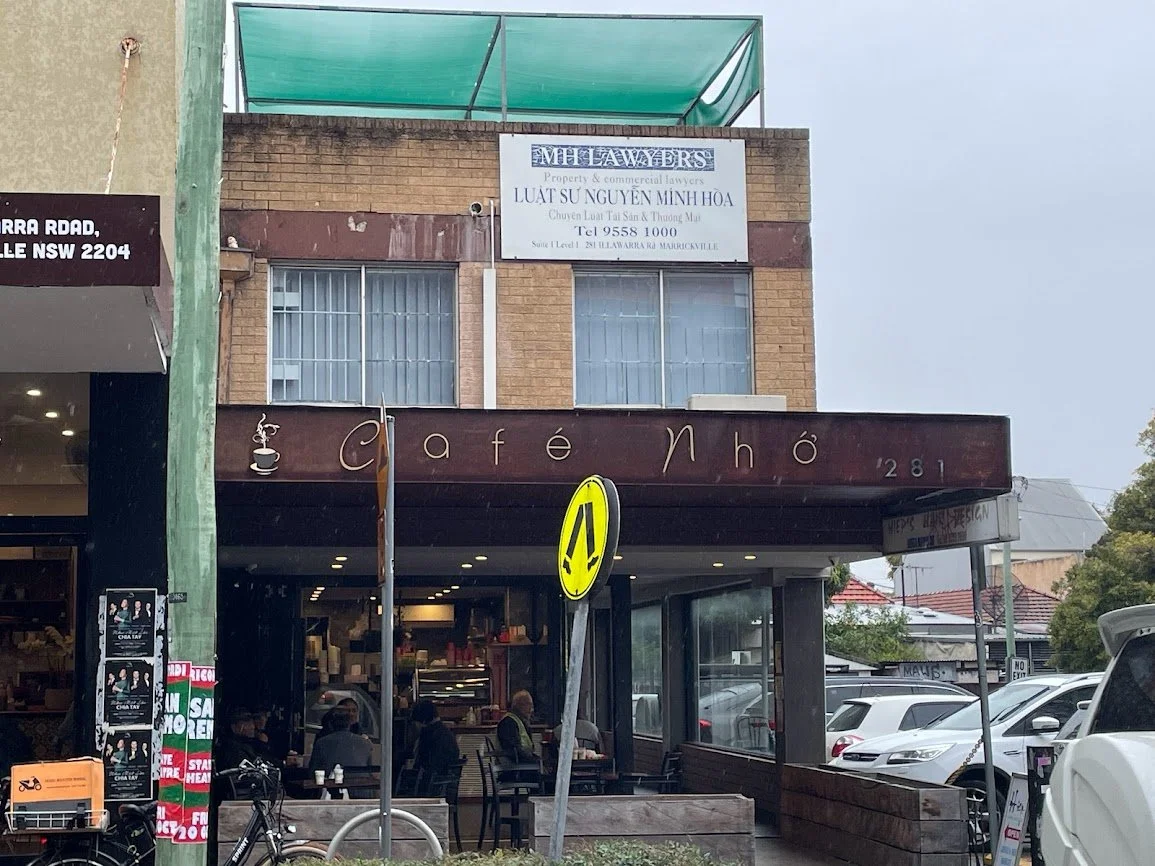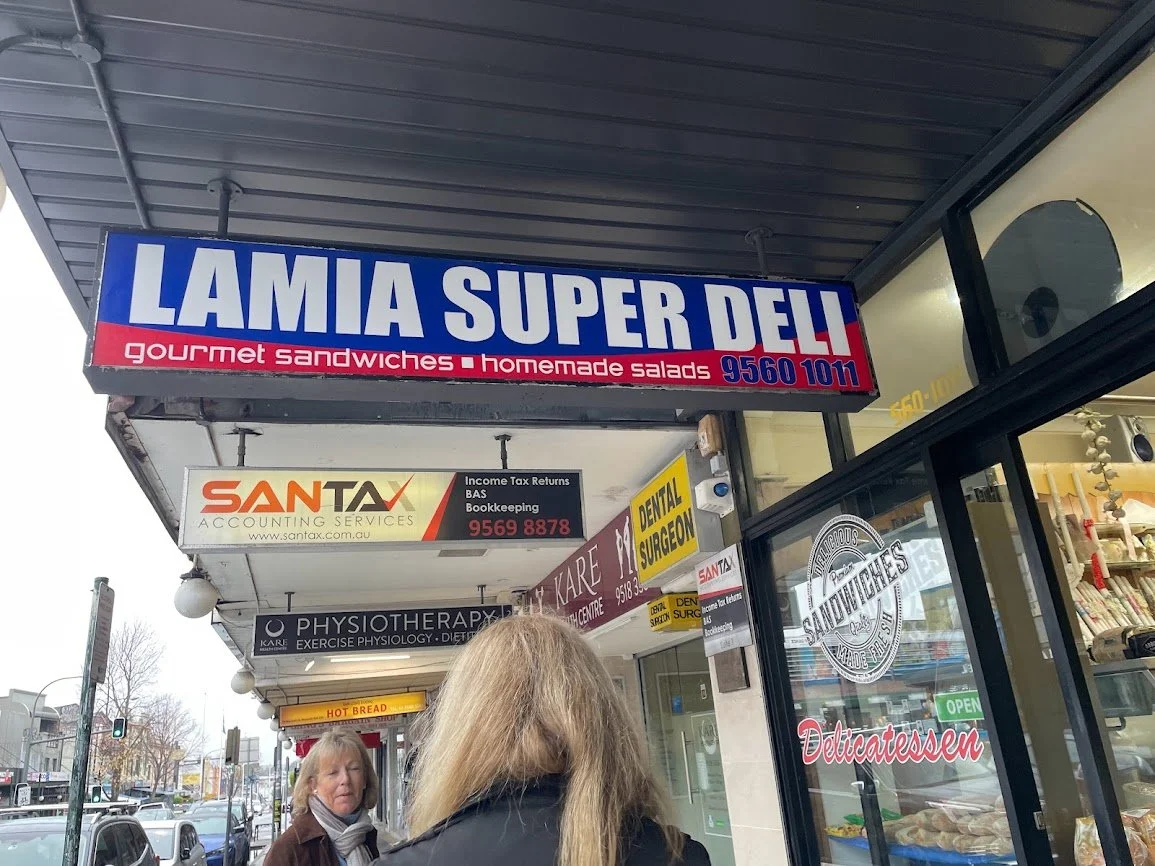Marrickville
Background
Originally inhabited by the Gadigal people, who were seen fishing on the Cooks River on what is now Marrickville golf course in the 1830s. Pemulway, a First Nations warrior who led resistance against colonists until he was shot dead in 1802 was known to fish in the river. His country stretched from the Cooks River to Botany Bay, to the Georges River and Salt Pan Creek.
The name Marrickville comes from the Marrick estate of Thomas Chalder, named for his original village of Marrick in North Yorkshire. It was subdivided in 1855, mainly into farms and market gardens and the publican of the Marrick Hotel (now the Henson Hotel) is credited with adding the ville in 1861. From 1903 - 1911 the population increased to become a growing suburb on the edge of Sydney. Some of the first migrants came before WWII, other waves came after. Marrickville was voted 10th Coolest Neighbourhood in the World by Timeout in 2020. In 2022 it ranked at second coolest neighbourhood in Australia and 33rd coolest in the world. We explored the suburb over two days, its large and there was so much to see and do. Day 1 had an industrial and community feel, Day 2, history and food.
Day 1 - Community and Industry
We met at Seven 2 Three café and headed into the Addison Rd Community Centre. The Addison Rd Community Organisation manages the unique nine acre heritage site which was granted to the community in 1976, at that time a dilapidated army depot. The original vision was of arts and culture, reconciliation and multiculturalism as drivers of community health, cohesion and well being. ‘Addi Road’ is home to more than 20 community organisations, art studios, galleries, theatres, a radio station, open green space, gardens and 169 trees. Addison Road Community Organisation runs a Living Museum program to increase awareness and enjoyment of the history and heritage of this special place and its changing communities — from its pre-colonial role as a seasonal wetland, an important water source and hunting grounds, to a 19th century dairy farm and market garden, to a place of enlistment for WWI, (six First World War buildings remain today) to a place of conscription and protest (led by the women from the Save Our Sons network) during the Vietnam War. Some of the highlights of the Centre are:
The Addison Rd childcare centre, one of the first multicultural centres, opened by Bob Hawke in 1988;
Flight Path theatre, offering a platform for independent theatre since July 2019;
Reverse Garbage centre which had provided goods for reuse since 1975 - it has recently moved premises;
Living Museum self guided heritage trail;
The Addi Rd Food Pantry, created in 2016 in response to growing inequality and environmental food waste concerns;
Koshari Korner.
Addi Road Food Pantry
We were fortunate one of the volunteers could spare us a few minutes for an overview. Addi Road Food Pantry was originally focused on food waste reduction and opened in an old shipping container. Packaged goods, purchased from Food Bank or donated by manufacturers or retailers are available for purchase on a points system where 1 point equals 50 cents. Spending $5 entitles the offer of free donated bread, fruit or vegetables. Anyone can shop there, no matter what their financial situation may be, supporting the philosophy and provision of low cost groceries and the commitment to food waste reduction. Sadly, demand has increased significantly over the last 12 months. Our volunteer gave an example of how time has changed the approach to food waste: a bakery chain would wet their bread to prevent it being retrieved and repurposed, only trumped by a major supermarket chain who used to put bleach on ‘yesterday’s’ bread.
We stopped for a snack at Koshari Korner, an Egyptian vegan street food restaurant owned and run by Walid, a marine engineer by trade who was unable to obtain engineering work upon immigrating to Australia. He uses his late grandmother’s recipes to conjure up magic food. We shared some mixed plates, including Koshari, the specialty dish made of lentils, pasta and rice topped with chickpeas, crispy onion rings and a fragrant tomato salsa. Lots of other delicious food and worth finishing off with some super baklava.
We wandered around the grounds, a little retail therapy at a Fair Trade store and learnt about the disused Armoury, the only stone building at the Centre. Built in 1957, it was constructed for the Australian Army Reserve’s storage of weapons and ammunition. Its thick stone walls and lightweight pop-off roof were designed to cope with an accidental explosion. Very solid, no longer used.
Our next stop was The Henson hotel, too early for a drink, but a pokie free pub worth supporting some other time. It was designed and built in 1936 on the site of the Town Hall hotel, a Tooth and Co hotel when the breweries owned hotels. A hotel has been on the site since the 1860s.
We walked past Marrickville Primary school, established in 1864 for 55 students. Mandatory school education was introduced in 1880.
In the school grounds is a huge School Rainbow Serpent, created by Robin Martin. UK born, Robyn has developed, through working in schools, unique ways of including many individual creators (up to 300+ so far), collaborating on single permanent large-scale exterior artworks that he composes and brings to fruition.
We continued wandering past lots of street art, adding colour and flavour to the industrial feel of the area.
We headed to the multi award winning Black Forest Smoke House, owned by the Deignan family, whose ancestors arrived in Australia in 1863, four generations ago. Over 13,000 tonnes of fresh Australian pork are processed every week. The shop looked and smelt fantastic and, in addition to the Smoke House supplying a stack of five star hotels and restaurants, we were lucky to be able to purchase products as well. Returning with a esky!
We called in at Mixtape Brewing and Bar. Whilst not open for a drink, the owner was happy to chat. They’ve been up and running since April 2022.
Lunch was meant to be at Two Chaps but it was crowded and going to be a long wait. We headed back up the hill to Illi Hill Café - delicious!
We passed more street art and small food businesses along the way.
Our final stop for a cocktail or two, the Bob Hawke Beer and Leisure Centre. Bob Hawke had been approached by the owners about starting a beer company with them. Bob laid down one condition, that his royalty share be donated to Landcare Australia, the environmental charity he had established in 1989. On April 6, 2017 Bob poured the first schooner of his namesake beer to officially launch Hawke’s Brewing Co. Every beer sold contributes to over $450,000 that has been raised for the environment.
We walked past a few pieces of street art and the entrance to the Camelot Lounge, a great live music venue, before heading home.
Created by artist and musician Daisy Knight.
Day 2 - History and food
We kicked off at Café Rima, near St Nicholas Greek Orthodox church. The Church was built in 1965 and was originally a house converted into a Church. It cost $140,000 to build and was funded by the Greek community of Marrickville.
We continued our walk along Livingstone Rd to St Brigid’s Catholic Church, opened in 1921, the second church in the area (the first, built in 1886, was in Despointes St). It has a number of significant artefacts and shrines, including:
The addition of the Great Rose window and Tower in 1965 (a planned second tower hasn’t happened).
The Pieta statue in the Mary Chapel. This replica of Michelangelo’s Pieta is the only life size reproduction of the Pieta in marble in Australia. St Mary’s Cathedral has a reproduction in stone. The statue was repositioned some years ago, using a complex system of pulleys. For focus and safety reasons, the Church was locked whilst the operation was being performed. A sacristan who had her own key would always come and pray before the Pieta. On that day, she was overwhelmed to see the Pieta rise slowly and majestically and float around the church. It is said she was unsure if it was a miracle or she was having a breakdown, but headed home for a cup of tea!
The Maria Goretti statue, provided by the Cutrupi’s of Orchy juice fame in thanksgiving for their son Frank’s recovery from polio. The family had prayed to St Maria Goretti for Frank, who went on to play A Grade Football.
The Calvary Shrine, the site of many processions, gatherings and blessings by the Italian, Vietnamese and other communities.
Across the road is the magnificent award winning Marrickville Library and Pavillion, beautifully restored from the main Marrickville hospital building, which operated from 1899 to 1990. The restoration was undertaken by Mirvac who obtained the right to develop 225 adjacent apartments and terraces, including nine for affordable housing. The new buildings incorporate recycled bricks, timber balustrades and columns; and the ceilings are designed to provide natural light and ventilation to the internal spaces. All care has been taken to preserve parts of the old hospital and butt it against the new structure.
The new library is a huge success, with many members of the community of all ages using it, and using it in many ways. The location of the hospital has been renamed Patyegarang Place, after a young Gadigal woman who helped teach her language to colonialists.
We proceeded up the road to the second Marrickville Town Hall, which replaced the original in 1922. It is dominated by a WWI memorial, a Winged Victory figure, a sculpture of Nike, the Greek goddess of victory, the largest known bronze casting on a memorial in Australia. The original sculpture was unveiled in 1919, and deteriorated until it was removed in 2009. In April 2015 a new modern replacement was unveiled.
We took a detour to the original Town Hall, the oldest civic building in Marrickville and the fourth oldest Town Hall in Sydney. It was completed in 1879 with a second storey added in 1883. It provides an important physical record of the early history of the municipality from its origins as a small village.
We headed off down Illawarra Rd, noting the wonderful mosaics on the footpath. Both Illawarra and Marrickville Roads’ shopfronts are paved with colourful mosaics that depict the culture, lifestyle, heritage and uniqueness of the suburb. From September 1993 to September 1994 the project was managed by Council and invited participation from schools in the district, cultural associations, artists, local theatrical groups, as well as social and religious communities to join force and exhibit their ideas of what defines their community. The finished project is an array of mosaics such as ‘Tree of life’, ‘Olympia’, ‘Greetings’ and ‘Bells of St Clements’ that depict and create intrigue and an outward presence of Marrickville.
We piled in to Khoi Eatery for lunch, and had a great Vietnamese meal.
We looked towards Banh Cuon Ba Oanh, a unique style of Vietnamese lunch you cannot get outside of Marrickville and Cabramatta (too small for our group) and then turned back towards Marrickville Rd and walked past the great little bar Titus Jones, Cafe Pho (for great Vietnamese coffee) and the famous Marrickville Pork Roll Shop. Opened in 2008 by Khiem and Nga Du in a hole in the wall shop on Illawarra Rd, at one stage a toilet block and now expanded to a larger shop and other locations. We saw Lazy Bones bar (cocktails)and the Nelson Mandela mural on the corner.
We looked upwards to some great sculptures by Ces Camilleri of Creative Artistic Steel, depicting scenes from the shops below them. In 1999 Ces was invited to Marrickville where local shop owners were offered a chance to have 50 per cent of the cost of a custom-designed, one-of-a-kind sculpture, plus ongoing annual maintenance covered by the council in its bid to draw Olympic tourism to the area. Camilleri’s creative process begins with sketching before moving designs on to steel sheeting, then manipulating and cutting. Every strand of hair and shoelace is painstakingly made and individually fitted before the entire piece is dipped in a bath of pure zinc to prevent damage from the elements once installed. Then they’re sanded back and hand-painted with sign-writer’s paint, using both hand and airbrushing. He says each figure took him about three weeks to complete.
After a 10-month creation process, the 17 steel figures, each weighing between 20 to 30 kilograms, and their respective accoutrements – tables, chairs, palm trees and even an entire front bar, were bubble-wrapped, bundled into a three-tonne truck and driven by Camilleri from Melbourne to Marrickville. It took him about eight days to install the scenes.
Camilleri has continued to visit his creations for an annual check-up.
Our next stop, the Lamia Super Deli held lots of treasures and a few of us bought a few supplies. The deli was established by Apostolos and Maria Haralambis in 1968 and was named for the Greek city they came from. Harry Cotsinis bought the business in 1995 and together with his son Jim and others continue to serve many customers seeking delicious Greek food.
We walked past Where’s Nick Wine Bar and the Goblin Wine shop next door. Two brothers, Julian and Dominic Abouzeid hoped their younger brother Nick might join them in the wine bar and shop venture - which he declined. They were fortunate to have award winning sommelier Bridget Raffal join them instead.
Again, we passed another great bar, Gasoline Pony, a live music venue run by and for musicians. We balanced out the Greek deli with a visit to the Paesanella Food Emporium, located on the third floor, above the pizza bar and café, that showcases many of the products. They make their own ricotta, mascarpone, buffalo mazzarella and other cheeses and sell lots more Italian gourmet products as well.
Our final stop was a return to the Bob Hawke Beer and Leisure centre - those sunny boy cocktails are rather special!
Day 1 - the community and industrial area
Day 2 - History and food
References
https://en.wikipedia.org/wiki/Marrickville,_New_South_Wales
http://www.marrickvilleunearthed.com/
https://addiroad.org.au/our-history/
https://mgnsw.org.au/organisations/addison-road-community-organisation/
http://kosharikorner.com/
https://sydney-city.blogspot.com/2019/07/marrickville-henson-park-hotel.html
https://blackforestsmokehouse.com.au/
https://marrickvil-p.schools.nsw.gov.au/about-our-school/our-staff1.html
https://robinmartinart.com.au/about
https://theaither.com/we-chat-with-artist-musician-daisy-knight-aka-daisy-attack-of-sandwich-magic-ex-dweeb-city/
https://stbrigid.org.au/about-us/our-history/
New Marrickville Library and Pavilion - Inner West Council (nsw.gov.au)
https://www.historypin.org/en/explore/geo/37.77493,-122.419416,12/bounds/37.669835,-122.523786,37.879876,-122.315046/paging/1/pin/130164
https://www.broadsheet.com.au/sydney/art-and-design/article/theyll-never-rust-enduring-eccentricity-marrickville-shop-people
https://greekherald.com.au/community/vasilis-taxidi-lamia-super-deli-the-heart-of-marrickville/
https://wheresnick.com.au/about-us/

